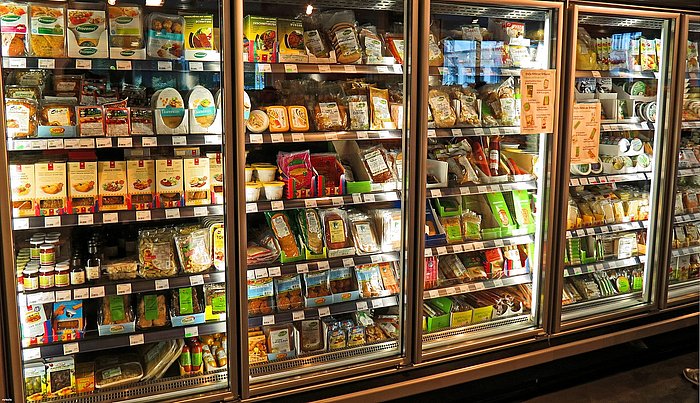Newsletter IP, Media & Technology July 2015
ECJ: List of ingredients does not neutralize misleading packaging
ECJ, Decision of 4 June 2015 (case no. C-195/14)
Editor’s head note
If the labeling of a food product and the manner in which it is labeled, by means of the appearance, description, or visual representation of a particular ingredient, creates the incorrect and – for the average consumer – misleading impression that such ingredient is contained in the product, this deception is not remedied by the accurate listing of the ingredients on the packaging (without the ingredient in question).
Annotations
This recent decision by the ECJ was made in response to a reference for a preliminary ruling issued by the Federal Court of Justice (Decision of 26 February 2014, case no. I ZR 45/13 – Raspberry-Vanilla Adventure). In the underlying case, the German consumer protection association Verbraucherzentrale Bundesverband e.V. (vzbv) brought an action against a tea producer for what it alleged was misleading packaging for a children‘s fruit tea with the product description “Felix Himbeer-Vanille Abenteuer” (“Felix Raspberry-Vanilla Adventure”). Fresh raspberries and vanilla blossoms are depicted in several places on the packaging, which also contains multiple references to “fruit tea with natural flavours” and “only natural ingredients”. In actual fact, the tea contains neither components nor flavours derived from raspberries or vanilla plants, but only natural aromas with raspberry and vanilla flavours (which, however, were not made from raspberries and vanilla, as they would otherwise have been declared as “natural raspberry flavour” and “natural vanilla flavour”). The actual composition of the product is accurately stated in the list of ingredients on the back of the packaging.
The liberal view of the Düsseldorf Higher Regional Court, citing earlier ECJ case law
The appellate court (Higher Regional Court of Düsseldorf) rejected the suit of vzbv, referring to the previous jurisprudence of the European Court of Justice. The ECJ issued several decisions some years ago according to which an average consumer suitably alert under the circumstances, which is the sole relevant standard for protection according to the European consumer model, devotes greater attention to the list of ingredients on the packaging if he intends to make his purchasing decision dependent on the presence or absence of certain ingredients. A consumer paying attention only to other components of the packaging and reaching conclusions about its contents solely from those components is not protected against the danger of being misled under this view.
The Federal Court of Justice‘s reference for a preliminary ruling
The Federal Court of Justice was of a different mind in the present case, and thus referred the case to the ECJ for a preliminary ruling. The Federal Court of Justice justified its differing opinion with the argument that, in view of the numerous packaging elements which together clearly inferred the use of components of real raspberries or vanilla plants, even a consumer of average awareness would assume that the product contained such components, and would thus not examine the list of ingredients in detail.
Clarification by the ECJ
In its recently issued decision, the ECJ agreed with the legal analysis of the Federal Court of Justice, and made clear that an overall misleading impression of the contents of a food product created by the design of the packaging is not simply neutralized by the list of ingredients even in the case of an average consumer. If the design of the packaging creates the impression that a certain ingredient is used therein, it is not in compliance with EU law if the absence of the ingredient can only be determined by reading the list of ingredients. Whether the design of the packaging does indeed create such an impression is a question to be decided by the national court. The decision remains relevant, regardless of the 2014 replacement of the Food Labeling Directive by the Regulation on the Provision of Food Information to Consumers (Regulation (EU) No. 1169/2011), as this of course also contains a prohibition on providing misleading information about food, in particular through its presentation (Art. 7 of the Regulation).
Further developments in the case
The final decision in the legal dispute concerning the fruit tea is the responsibility of the Federal Court of Justice. However, given the phrasing of the reference for a preliminary ruling, one may suspect that the “Raspberry-Vanilla Adventure” will not end well for the manufacturer.
Conclusion
Producers of food products can expect their products to face more frequent complaints under competition law alleging that the design of the packaging suggests a composition of the product that is not borne out in reality. The argument in defense, namely that the inclusion of an accurate list of ingredients on the packaging precludes the possibility that an average consumer may be misled, has lost much of its force as a result of the recent ECJ decision. However, one also should not conclude from the latest jurisprudence that the list of ingredients is now entirely immaterial to the question of whether packaging is potentially misleading; the key perspective remains that of the average consumer, who – depending on the type of product and the design of the packaging – can draw different conclusions from its elements and, depending on the case, will not necessarily get a concrete idea of the ingredients used without looking at the list of ingredients. The relevance of the overall circumstances in each specific case is also emphasized by the ECJ. In the case at issue, several elements of the packaging each implying the use of genuine raspberry or vanilla components came together and collectively caused the objectionable misapprehension. Had only some of these elements been used, it is possible that even the order for reference of the Federal Court of Justice could have read differently. The question of distinguishing permissible from impermissible package design, traditionally a subject of contention among jurists, thus remains a matter to be analyzed on a case by case basis. Much significance will attach to the question of whether individual (potentially misleading) design elements are used in an “eye-catching” way, as was assumed of the illustrations of raspberries and vanilla by the Federal Court of Justice in the present case. In that event, given the continued holding of the FCJ in many decisions with regard to such “eye-catching” advertising elements, it may in fact be impossible for a misapprehension to be adequately corrected by providing an accurate list of ingredients, simply due to the prevailing “eye-catching” effect (as already held earlier, for example, by the Higher Regional Court of Cologne, Decision of 18 January 2008, case no. 6 U 144/07 – Fruit2Day, No. 19 et seq.).

![[Translate to English:]](/fileadmin/_processed_/b/3/csm_Runkel__Kai_Oliver_print_077e2ee476.jpg)






![[Translate to English:] [Translate to English:]](/fileadmin/_processed_/5/9/csm_20-Euro-Schein_505aaf1110.jpg)



